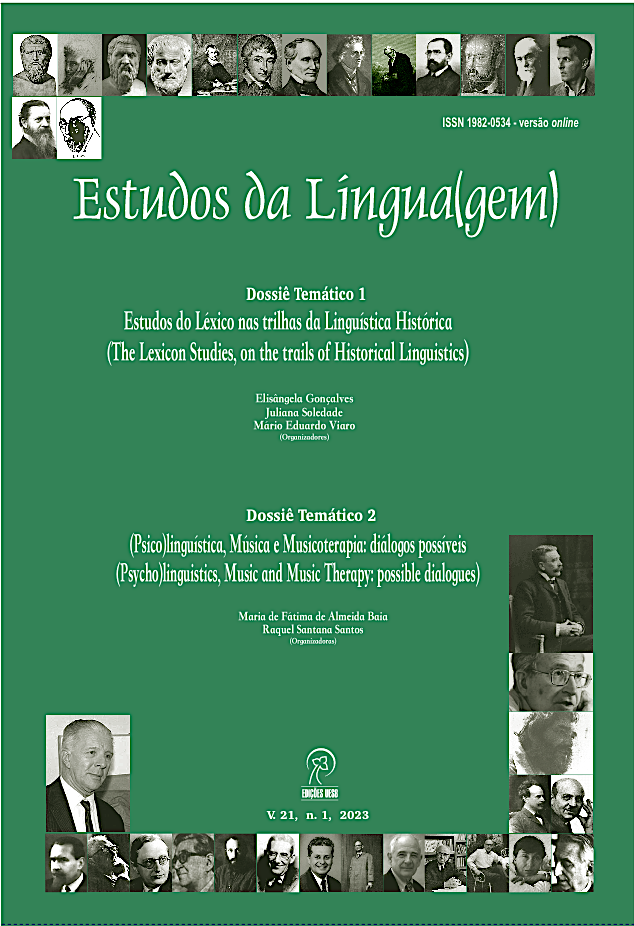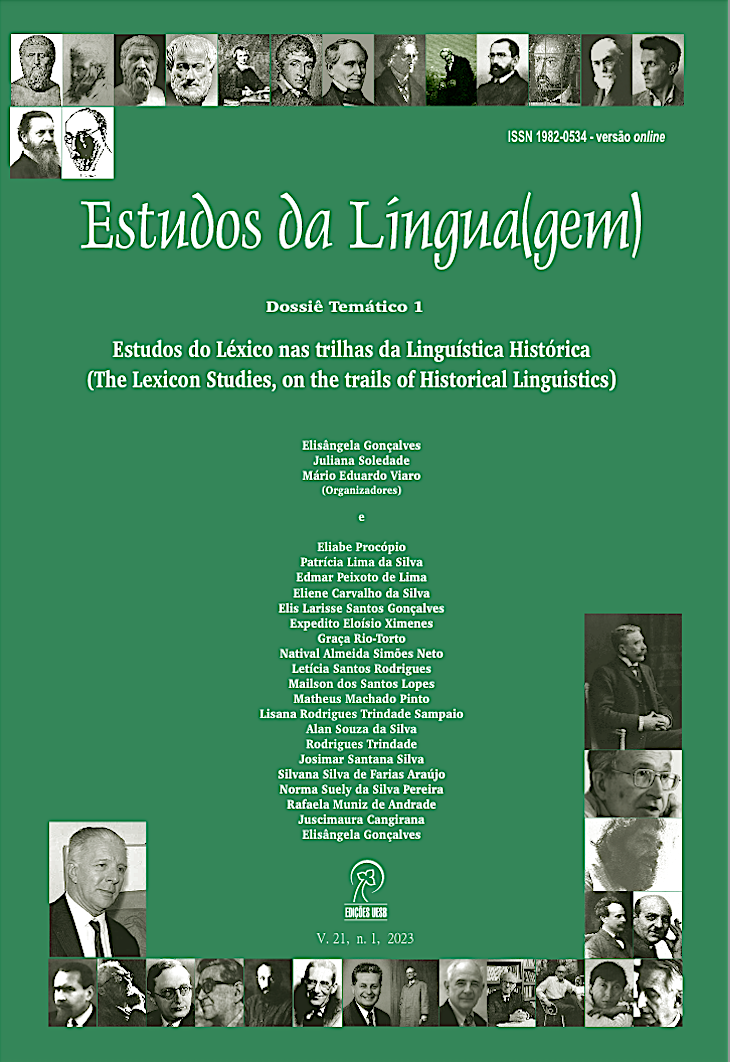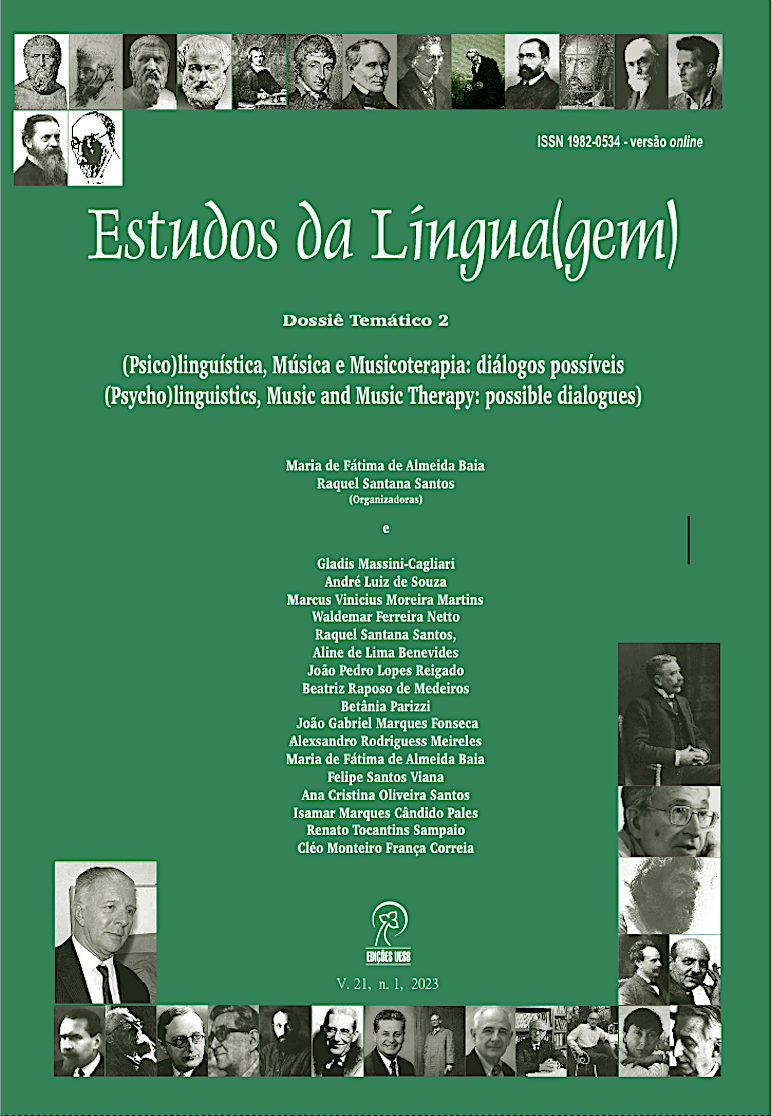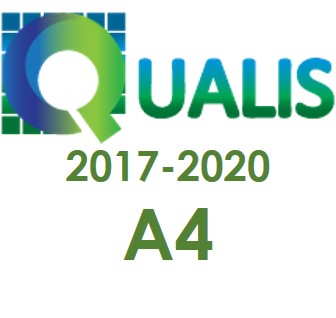Vol. 21 No. 1 (2023): Estudos da Língua(gem) - ISSN: 1982-0534

Dossiê Temático 1: Estudos do Léxico nas trilhas da Linguística Histórica (The Lexicon Studies, on the trails of Historical Linguistics)
Dossiê Temático 2: (Psico)linguística, Música e Musicoterapia: diálogos possíveis ((Psycho)linguistics, Music and Music Therapy: possible dialogues)








